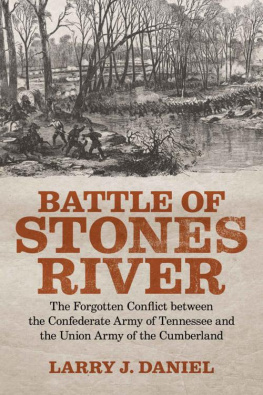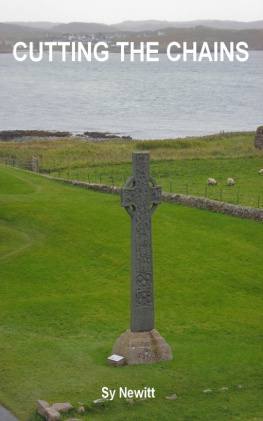Thanks to Elizabeth Sutherland, Isabel M Henderson, Paul Bouissac and Rob Lee for helpful feedback for earlier versions of the work.
Thanks also to grandson, Jack Veness, for handling the illustrations of stones and symbols, and to son-in-law, Dom Harland-Jones, for helping in the transition from manuscript to book format.
1 Introduction
There are around 40 to 50 different Pictish symbols. They appear most strikingly on stone slabs, but also on cave walls and small portable objects of different materials. One view, based on artistic relationships with other historical artefacts and documents, maintains that the stones and the symbols carved on them were created in the 7th century CE. Lloyd and Jenny Laing (1993, p102106) discuss and disagree with this. More likely seems the development of the symbols from their first probable mention as 3rd century tattoos by Latin authors (Laing 1993, p122).
Crudely carved Proto symbols are found on the walls of several caves. Excavation of the floor of the Sculptors Cave, Covesea in Moray found not a single item later than the 4th century and concluded that the wall carvings were contemporary with the Roman period occupation (Benton, 1931; Laing, 1993, p107/8). A proto double disk symbol (Fraser ed., 2008 number 171) was found in 6th century alterations to a structure at Pool in Orkney. Also at Pool a bone object (Fraser ed., 2008 number 211.1) radio-carbon dated possibly as early as the 4th century bore a crude double disk and Z rod and part of a rectangular design (Hunter, 1990; Laing, 1993 p106/7).
Laing addresses the initial use of symbols on stones (1993, p111).
There is no reason at present to date any of the stones earlier than the fifth century. At this time the idea of carving them on slabs may have been acquired by copying the memorial stones with Latin inscriptions that were being set up in southern Scotland, Wales and south-west England, themselves in imitation of Roman tombstones. This does not necessarily mean all symbol stones were tombstones, though it is possible that a good many were.
And (1993, p122)
The most logical interpretation of the symbols is that they are identifications of the dead, or personal inscriptions where they occur on portable objects or cave walls. They were, in effect, names and/or titles, giving cultural identity/ancestry or history. Thus far, most interpretations of the symbols are in agreement: there is less agreement on how they should be read.
Laing (1993, p1235) summarises three prominent proposals as follows. Charles Thomas (1963) attempts to provide explanations for individual symbols. Symbols fall into two main groups animals and abstract designs. He sees animal symbols as the totemic creatures of tribal groups and the abstract as indicators of status. Ross Sampson (1992) suggests the symbols are hieroglyphs, each a component of a name. He suggests that ancient Irish and Welsh personal name frequencies appear to match the frequencies with which symbol combinations occur on the stones. Anthony Jackson (1984) believes that stones register marriage alliances between dynasties. Class I stones generally display two principal symbols, one above the other. Often there is a third element beneath these two consisting of a mirror or a mirror and comb. He sees the mirror and comb as a special symbol indicating that the two principal symbols relate to a woman. Definitions of Class I and Class II stones are given in Appendix 1.
No theory has gained significant support. Iain Fraser (ed. 2008, p1) remarks:
Over the centuries the significance of these symbols has been lost: the element of mystery, however, only renders research and speculation into their meaning and function all the more compelling.
The proposals above focus on symbol pairs as individual entities. Attempts have been made to identify collective features. Suggestions that the stones are territorial markers have gained little support, since individual symbols cannot be related to particular localities (Laing 1993, p101,125). Rob Lee and his colleagues (2010) suggest that the symbols as a group may embody a written language. They use a mathematical process known as Shannon entropy to study the order, direction, randomness and other characteristics of each stone symbol. Their results suggest that information is encoded in the symbol stones, but analysis gives no assistance with regard to what that information might be.
Consideration of the symbols as a whole does seem to be a useful approach. Isabel M Henderson (1958, p55, 57) reflects on the historical aspect.
It is exceedingly difficult to imagine what sort of historical circumstances could initiate a symbolism so exact and so rigorously observed from Pabbay in the W., to Shetland in the N. and to the Forth-Clyde line in the S. To give the symbolism the prestige of a national system requiresa leader wielding wide authoritywe have the evidence of the Irish annals, Adamnan and Bede for the activities of Brude son of Maelchon (c 55584). In many ways Brude fills the role of initiator of the symbolism well. He was a rex potentissimus whose check of the Irish must have given him immense prestige. He reigned at a time when we know that the Picts controlled the Western Isles. He had considerable authority in Orkney.
Accepting the timescale suggested above, the symbolism embodied in the class I Pictish stones was probably developed and displayed on stones in the 5th century, earlier than Brudes 6th century reign. Mrs Henderson suggests that Brude may have been responsible for the consistency in the representation of the symbols. It is suggested here that, more than this, he may have been responsible for which symbols were portrayed in each place and arranged that stones and their symbols were displayed in accordance with an overall plan. It is suggested that an overall pattern of symbols was imposed on stones in the areas of Pictland from Perth to Aberdeenshire to the Western Isles to Orkney. The objective of this study is to identify this pattern. The quotation from Laing on page 12 may be taken to well represent the purpose of the stones as initially erected, but over time they began to be arranged in chains and a century after their initial appearance a powerful king commandeered the stones and symbols for his own purposes.








